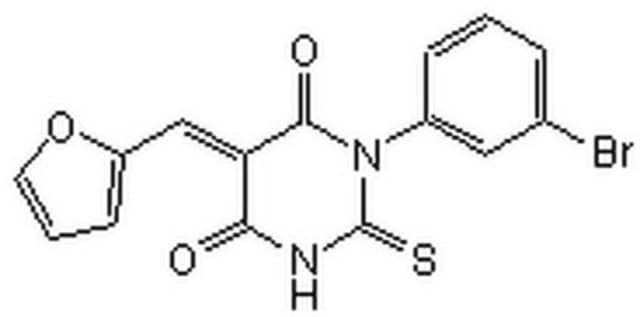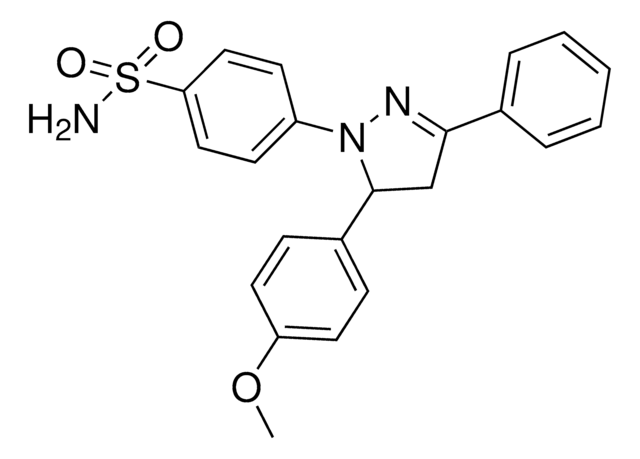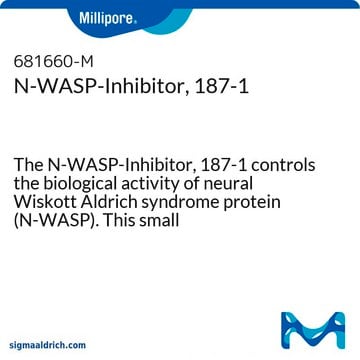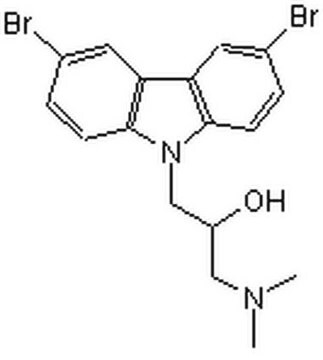W2270
Wiskostatin
Sinónimos:
1-(3,6-dibromocarbazol-9-yl)-3-(dimethylamino)propan-2-ol
About This Item
Productos recomendados
assay
≥98% (HPLC)
form
powder
color
white to beige
solubility
DMSO: 10 mg/mL, clear
storage temp.
2-8°C
SMILES string
CN(C)CC(O)Cn1c2ccc(Br)cc2c3cc(Br)ccc13
InChI
1S/C17H18Br2N2O/c1-20(2)9-13(22)10-21-16-5-3-11(18)7-14(16)15-8-12(19)4-6-17(15)21/h3-8,13,22H,9-10H2,1-2H3
InChI key
XUBJEDZHBUPBKL-UHFFFAOYSA-N
General description
Application
- as a small-molecule inhibitor of Wiskott-Aldrich syndrome protein (WASP) in human osteosarcoma U2OS cells and mouse-tail fibroblast cell lines
- as a neural (N)-WASP inhibitor in cultured neurons and in the human embryonic kidney (HEK293) cells expressing HA-Parkin
- as a neural (N)-WASP inhibitor in dorsal root ganglion (DRG) cells to investigate vascular endothelial growth factor (VEGF) effect on the actin related protein 2/3 complex (Arp 2/3)
Biochem/physiol Actions
signalword
Danger
hcodes
Hazard Classifications
Acute Tox. 3 Oral - Aquatic Chronic 4
Storage Class
6.1C - Combustible acute toxic Cat.3 / toxic compounds or compounds which causing chronic effects
wgk_germany
WGK 3
Certificados de análisis (COA)
Busque Certificados de análisis (COA) introduciendo el número de lote del producto. Los números de lote se encuentran en la etiqueta del producto después de las palabras «Lot» o «Batch»
¿Ya tiene este producto?
Encuentre la documentación para los productos que ha comprado recientemente en la Biblioteca de documentos.
Los clientes también vieron
Nuestro equipo de científicos tiene experiencia en todas las áreas de investigación: Ciencias de la vida, Ciencia de los materiales, Síntesis química, Cromatografía, Analítica y muchas otras.
Póngase en contacto con el Servicio técnico


